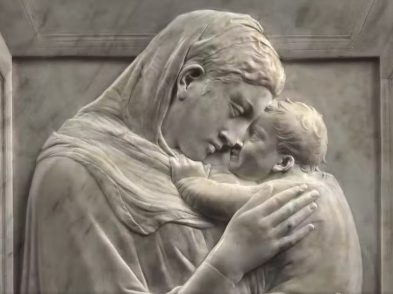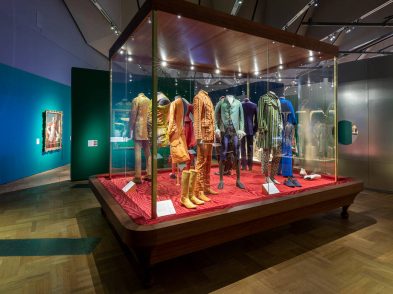Thirteenth- and fourteenth-century travellers to the Lunigiana were obliged to pay a toll to the Luni church or the Malaspina marquises, who owned castles on the hills above the river Magra and did not appreciate that the bishop of Luni had built his home and fortress above its mouth. Enrico da Fucecchio was a belligerent bishop, keen on the territorial rights of the church and not a day passed without skirmishes with the proud Malaspina. In 1306, Dante Alighieri took on the dangerous messenger role as a favour to Moroello Malaspina. Luckily that year, Alberto dei Camilla was a more benevolent bishop to reckon with.
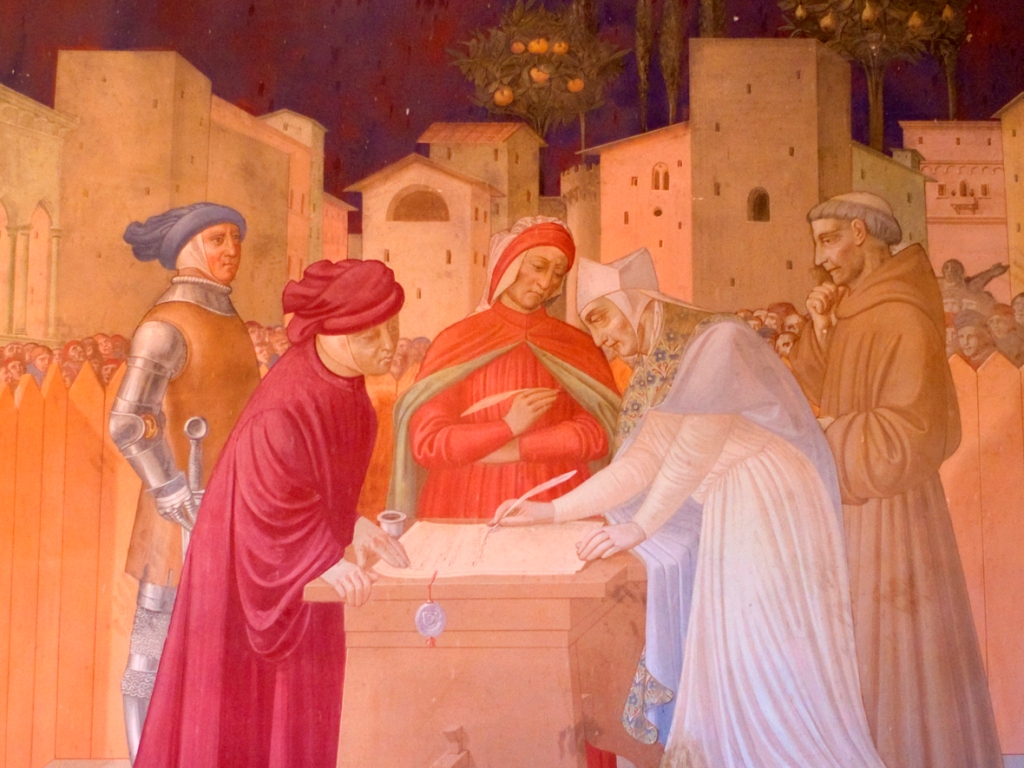
Dante meeting the Malaspina family
Who were the Malaspina, the first lords to host the exiled poet in his diplomatic capacity? Descendants of the prestigious Obertenghi dynasty, they owned at least 150 castles in the province of Massa-Carrara, which was their fiefdom until the arrival of Napoleon. In 1200, this powerful family divided into two branches: Spino Secco and Spino Fiorito, which ruled respectively on the left and right banks of the Magra. Although the prolific family tree can be found in Carrara Castle, the princely seat was Fosdinovo. Elevated to dominate and defend the town, the Malaspina Castle in Fosdinovo was originally entered through a drawbridge-protected gate. Composed over three eras, the manor dates back to the twelfth century with the bridge house built by the nobles of Erberia. In 1340, the property was yielded to Spinetta Malaspina, official founder of the Marquisate of Fosdinovo, who built the fort, which was later enlarged. The medieval tower, sixteenth-century loggias and the palace bear witness to their builders, the feudal master, Renaissance knight and the last refined marquis, who abolished the feudal laws. Carlo Emanuele, the last marquis, loved hunting and theatre, but despite the graceful Spino Fiorito coat of arms, the castle’s history speaks more of political and military activity than worldly life.
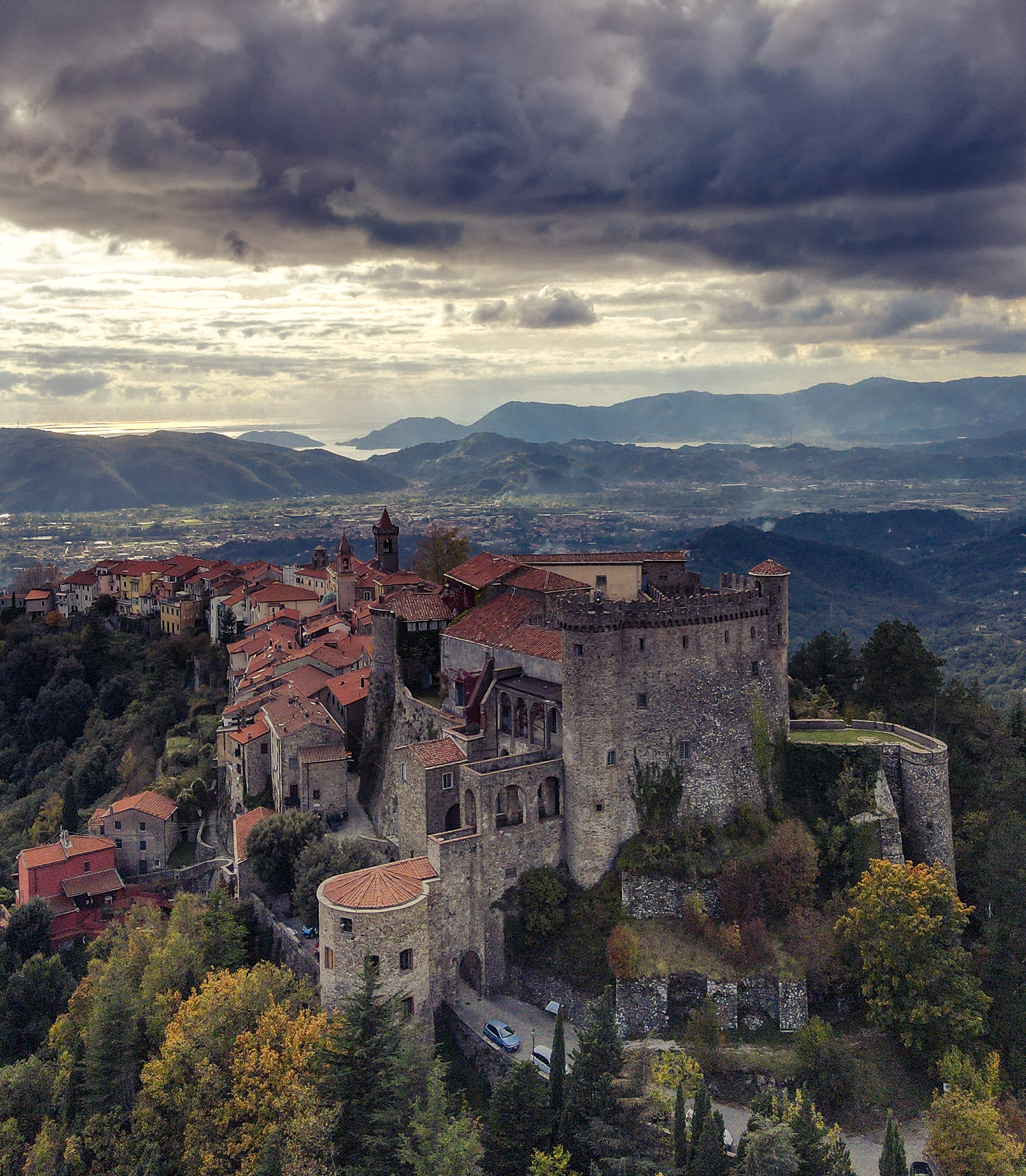
Malaspina Castle in Fosdinovo
Among the memorabilia on display, visitors are repelled by the heir’s “cradle”, an iron cage in which the family’s newborn were locked to prevent unlawful replacements. The Marquis of Fosdinovo nevertheless had the privilege of legitimizing bastard children as well as minting coins and sentencing death. The fairly recent discovery of a female skeleton with animal bones in a wall niche revived the memory of Bianca Maria Aloisia Malaspina. Legend has it that the unhappy girl was walled up alive with a dog (symbol of fidelity) and a wild boar (symbol of rebellion). Bianca Maria had fallen in love with a squire, who mysteriously disappeared before she was forced to enter a convent. Devoid of religious vocation, Bianca ran away, only to be recaptured and put to death by her family. Ghost stories aside (of which there are many), the stronghold held a vast armoury and a lengthy series of furnished halls, which culminated in the throne room and Dante’s Chamber. Situated in the east tower, the quarters are said to be where the poet stayed during his time in the Lunigiana, while the great hall is frescoed with vivid representations of the episode related to Dante’s mission as ambassador.
Dante was already exiled from Florence and living in Lunigiana when he was summoned by Moroello and Franceschino Malaspina to act as the procurator in charge of forging peace between the noble family and the Bishop of Luni, as documented by the Pace di Castelnuovo of 1306. The Malaspinas were Ghibellines and Dante was a Guelph, but the former had not taken kindly to the fact that Pope Boniface VIII had plotted his sentence. Franceschino was a cousin of Corrado, who speaks with Dante in the valley of Purgatory described in Canto VIII. In turn, Corrado was the nephew of Corrado L’Antico, a Malaspina ancestor, who was also mentioned in the ‘Divine Comedy’. This was Dante’s indirect way of thanking Franceschino, who succeeded his father Moroello I in the feud of 1285 and provided the poet with hospitality. Even Gabriele D’Annunzio perceived the Supreme Poet’s presence and theorized about his inspiration in this “austere and proud Lunigiana which perhaps has the most beautiful mountains on Earth”. D’Annunzio added: “I like to think that Dante, guest of the Malaspina family, envisioned the City of Dis while looking at the Apuan Alps, in flames at sunset, as vermilion as if they were on fire. The castle of Fosdinovo was a fitting refuge for Dante: on a windy hill, with round towers, parapets covered in wild grass, terraces, entrance halls, dark stone courts, and all that iron-like, bellicose structure that the centuries have not bent.”
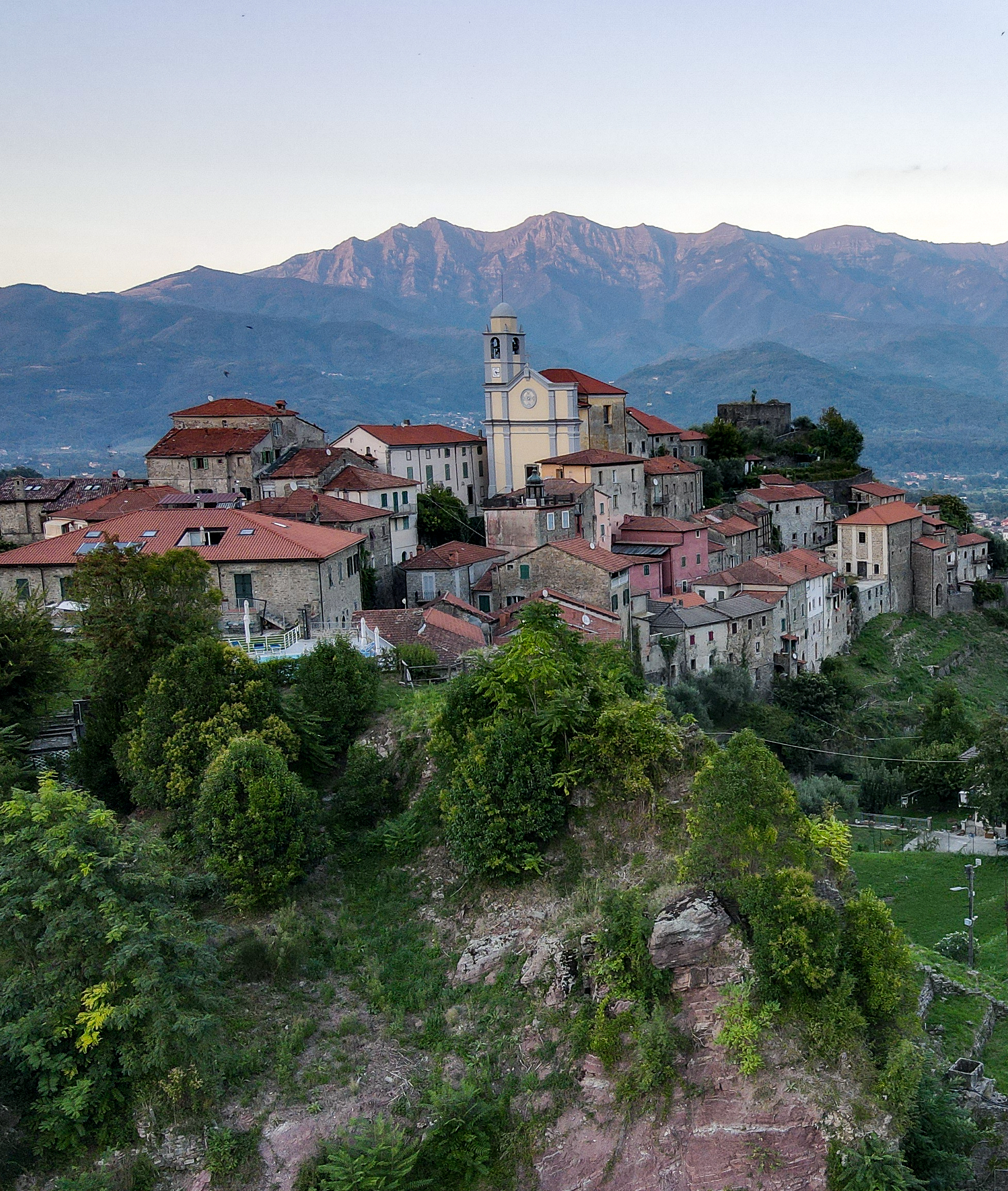
A view of Mulazzo
Franceschino was the Marquis of Mulazzo, another stopping place for Dante in the Lunigiana. In 1164, Mulazzo acted as imperial headquarters and, in 1221, it became the capital of the Malaspina branch of the Spino Secco. The village is in a dominant position, its houses stretching up in a circular path to the top of the steep hill, a challenge even for experienced hikers. Until not too long ago, a walkway unfurled among olive trees to a dilapidated door, from which a paved alley led into a clearing where the tower stands. Covered with ivy and weeds, the Casa di Dante is adjacent with its dry stone walls, a couple of narrow windows and a low door. It is most likely a historical extrapolation like Dante’s house in Florence or Boccaccio’s in Certaldo. In any case, on the side of the ruined tower, a sandstone plaque states, “On these stones lay the footprint of Dante, but more so the people of Val di Magra keep him in their hearts”. The castle ruins date back to Corrado Malaspina, the first Marquis of Mulazzo and lord of half of the Lunigiana. A brave warrior devoted to the emperor, Corrado was generous and good-hearted, for which Dante rewarded him with a few words in Purgatory.
Mulazzo now seeks to reap the rewards of Dante’s passage. The centuries-old buildings have been restored and the Dante house museum now contains a fine collection of drawings and documents about the poet’s spell in Lunigiana.
|
“So may the lantern that leads you on high
that shade began, “if you have heard true tidings
Currado Malaspina was my name;
the love that here is purified.” I answered: “I
they are not celebrated? Such renown
And so may I complete my climb, I swear
Custom and nature privilege it so
of wickedness.” And he: “Be sure of that.
by all the Ram’s four feet before this gracious
if the divine decree has not been stayed.” |
|
—Dante, Purgatory 8, 112-139 |
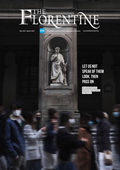
This article was published in Issue 276 of The Florentine.


